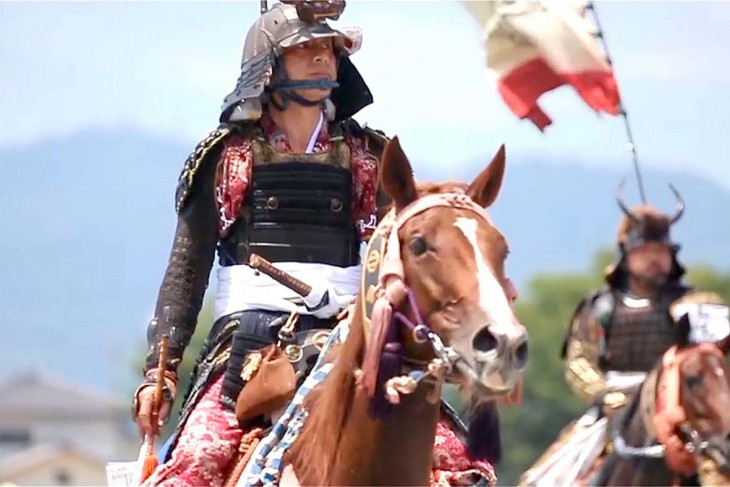
The Hamadori region is situated along the Pacific coast of Fukushima Prefecture. Located to the north of the region, the cities of Soma and Minamisoma play host to a festival held in July of every year. This is the samurai festival called Soma Nomaoi, with a history and tradition lasting over 1,000 years.
During the festival, over 400 mounted samurai carrying ancestral flags and equipped with armor present a heroic display of the Age of Warring States from Japan’s 15th and 16th centuries. Over the three days of the festival, visitors can experience traveling 1,000 years back in time in the many activities held throughout the city. Why not come and feel the energy of the Samurai Spirit that is still alive today?
Originally, the Soma Nomaoi festival began as a military drill to train strong soldiers in which wild horses were chased and captured on foot. Horses were subsequently taken to the local shrine to be treated as deities. (Soma Nomaoi has the literal meaning of 'chasing of wild horses in Soma.') Hosted by three shrines concurrently, the festival has also been designated an important intangible folk cultural asset by the Japanese government. With changes occurring over the many years, the festival is still held today, and it is now known to many as one of the six major festivals in the Tohoku region.
There are different highlights to see on each of the three days of the festival.
The first day begins with a formal opening ceremony, which is carried out concurrently at each of the three shrines according to the ancient format. The departing of the troops of the Soma clan, commanding the overall festival and once the leaders of the region, from the Soma Nakamura Shrine, is a particularly stately and solemn affair. The sound of the conch shell horn blown with great effort to signal the departure of the company echoes throughout the site, transporting the many visitors to an earlier time.
The main event of the Soma Nomaoi festival is the second day, called the 'Hon Matsuri' or 'main festival.'
The day starts with a parade of mounted samurai marching through the streets of Minamisoma City announced by the launching of fireworks that reach up into the summer sky. Here you will be able to see the heroic figures in very close quarters, filled with determination as they head towards the battleground.
Soon after their arrival at Hibarigahara, the main festival grounds, the 'Kacchu Keiba,' or 'armored horse race,' begins. With the sounding of conch shells and drums, ten horses begin traversing the 1,000-meter race circuit, ridden by mounted warriors enclosed in armor. The horses raise clouds of dust as they race along the track, as though recreating a picture scroll from the Age of Warring States right before your very eyes. The energy level of the attendees peaks at this point creating a sense of unity throughout the venue as the festival heads towards the climax.
This is followed by the 'Shinki Sodatsusen', a type of capture-the-flag competition, where the mounted riders attempt to grab falling flags launched as fireworks. Announced again with the sounding of the conch shell horns, over 400 mounted warriors gather at once at Hibarigahara. Two fireworks are launched from which two flags unfurl, and the mounted warriors compete to be the one to catch them. If you really wish to be immersed in the spirit of the festival, then you should also attend the Nomakake ceremony held at Odaka Shrine on the third day. After being released, wild horses are chased into the grounds of the shrine, where men adorned in white armor capture them bare handed for dedication in front of the shrine. This part of the festival is said to preserve the original form of the Nomaoi practice. The sight of the gallant and noble men attempting to capture the large horses with only their hands evokes a mood that is yet again different from the preceding two days.
The Soma Nomaoi is a festival with a deep history. You will likely enjoy the parades and ceremonies even more if you learn about some of that history beforehand. To learn more, we recommend visiting the Minamisoma City Museum. Here you can learn the history and some trivia about the Soma Nomaoi festival while observing the armor and weapons on display up close. Similar armor and weapons are also displayed at road stations, libraries, and other shops selling sweets or pickled vegetables in various locations throughout Soma and Minamisoma cities.


